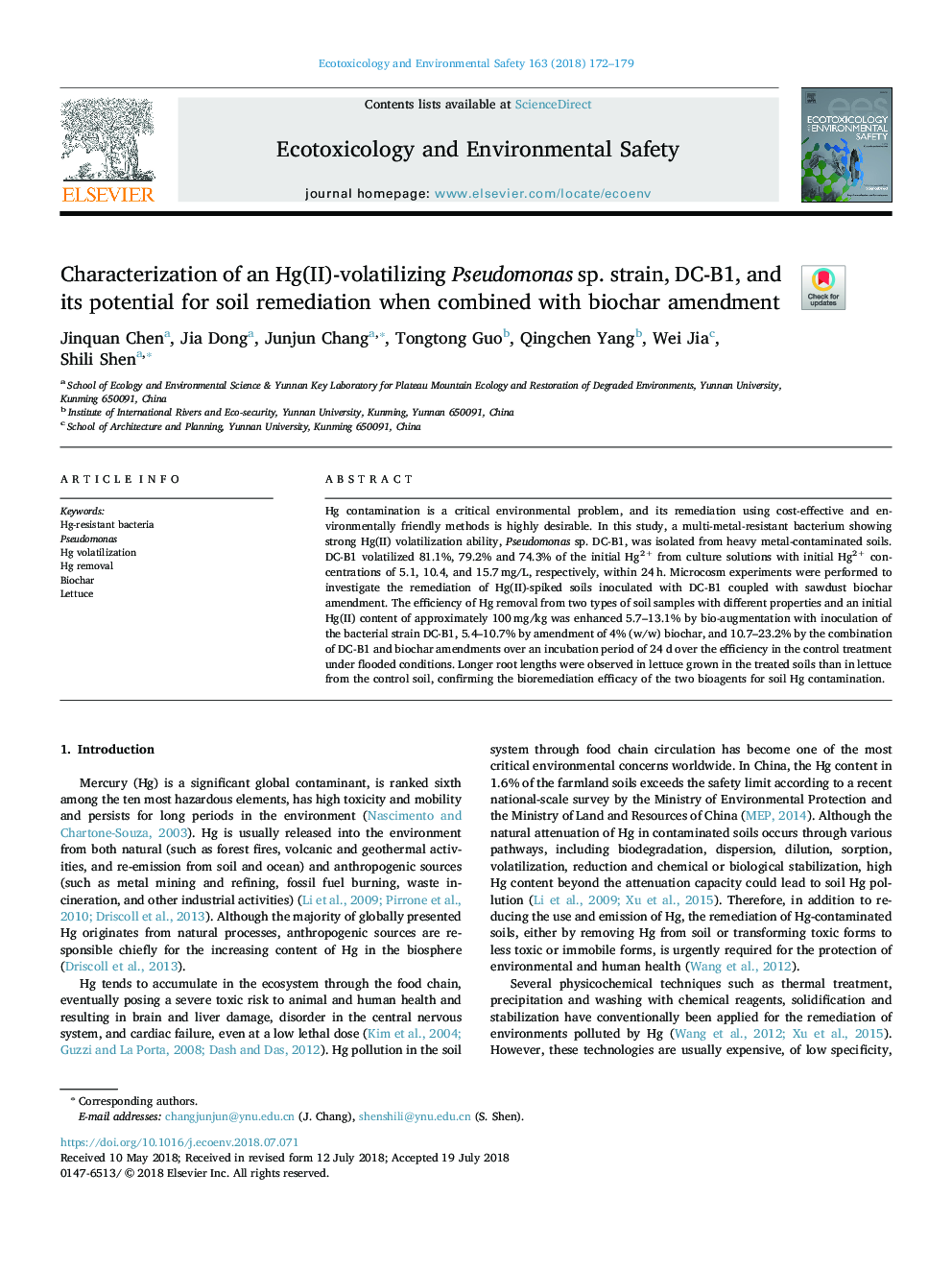| Article ID | Journal | Published Year | Pages | File Type |
|---|---|---|---|---|
| 8853260 | Ecotoxicology and Environmental Safety | 2018 | 8 Pages |
Abstract
Hg contamination is a critical environmental problem, and its remediation using cost-effective and environmentally friendly methods is highly desirable. In this study, a multi-metal-resistant bacterium showing strong Hg(II) volatilization ability, Pseudomonas sp. DC-B1, was isolated from heavy metal-contaminated soils. DC-B1 volatilized 81.1%, 79.2% and 74.3% of the initial Hg2+ from culture solutions with initial Hg2+ concentrations of 5.1, 10.4, and 15.7â¯mg/L, respectively, within 24â¯h. Microcosm experiments were performed to investigate the remediation of Hg(II)-spiked soils inoculated with DC-B1 coupled with sawdust biochar amendment. The efficiency of Hg removal from two types of soil samples with different properties and an initial Hg(II) content of approximately 100â¯mg/kg was enhanced 5.7-13.1% by bio-augmentation with inoculation of the bacterial strain DC-B1, 5.4-10.7% by amendment of 4% (w/w) biochar, and 10.7-23.2% by the combination of DC-B1 and biochar amendments over an incubation period of 24 d over the efficiency in the control treatment under flooded conditions. Longer root lengths were observed in lettuce grown in the treated soils than in lettuce from the control soil, confirming the bioremediation efficacy of the two bioagents for soil Hg contamination.
Keywords
Related Topics
Life Sciences
Environmental Science
Environmental Chemistry
Authors
Jinquan Chen, Jia Dong, Junjun Chang, Tongtong Guo, Qingchen Yang, Wei Jia, Shili Shen,
